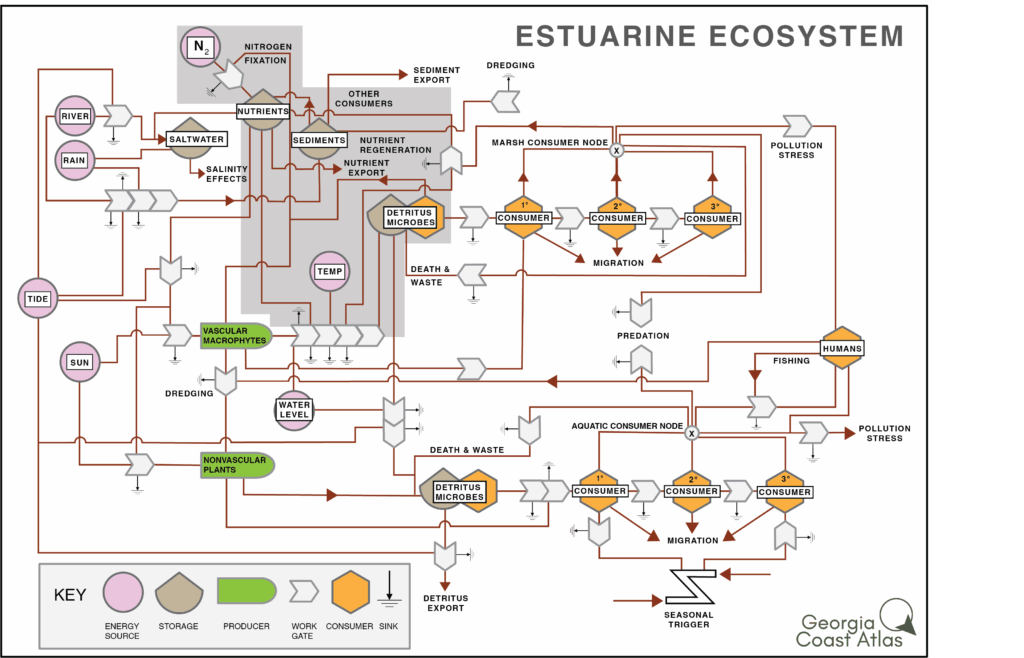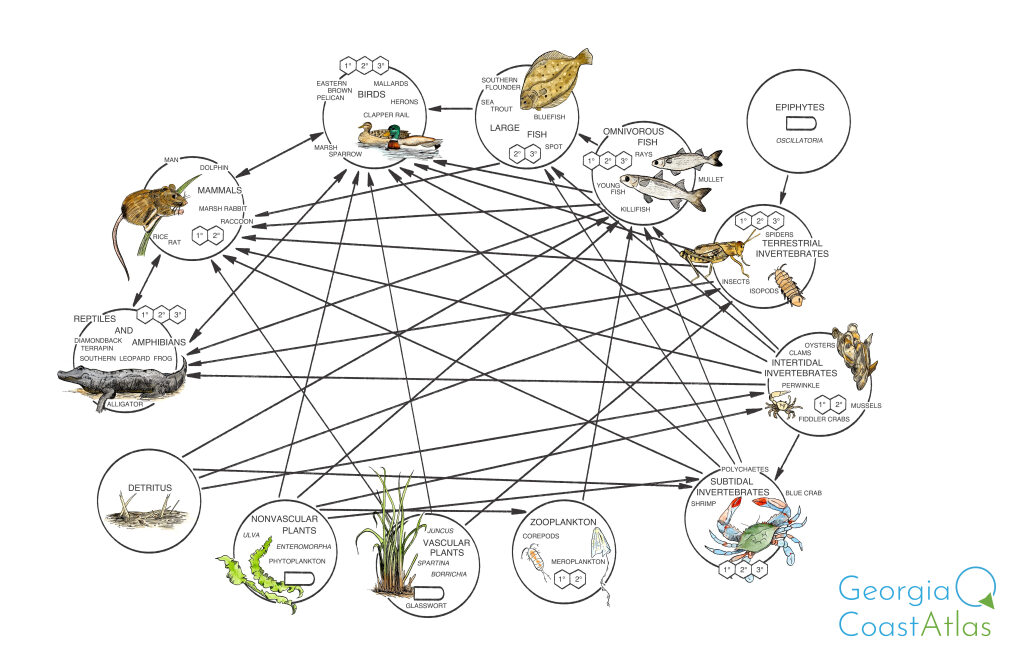
Estuarine ecosystems are areas with tidal deep water and adjacent wetland habitats that consistently or intermittently have ocean access. In these areas, ocean water is mixed with and diluted by freshwater. However, some areas may be hypersaline due to evaporation. rates. This transitional zone of mixing is known as the oligohaline-limnetic interface. This is where coastal freshwater (limnetic) meets with slightly brackish (oligohaline) waters, and salinity levels can fluctuate often or, in some cases, be stable. Coastal lakes in this zone are key indicators of climate change and provide opportunities for salt-tolerant species to thrive and have mobility inland. These areas can be subdivided into intertidal and subtidal subsystems. Intertidal areas are found between high and low tide marks, consisting of tidal flats, salt marshes, and mangroves. On the other hand, subtidal areas remain submerged from the lowest tide mark down to about six meters and consist of deeper channels, sand bars, and submerged vegetation.

